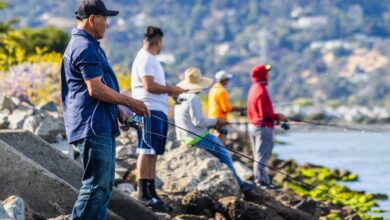How Do You Plan a Snowshoeing Trip in Winter
Winter transforms landscapes into a serene wonderland, making it an ideal time for outdoor adventures. Among the various winter activities, snowshoeing stands out for its accessibility and the chance to immerse oneself in nature. Planning a snowshoeing trip can be exhilarating, but it requires attention to detail to ensure a safe and enjoyable experience. Here’s how to organize your perfect snowshoeing excursion.
Choosing the Right Location
Selecting the right destination is paramount. Research local parks, national forests, or wilderness areas that offer snowshoeing trails. Websites and apps dedicated to outdoor activities can provide valuable information on trail conditions, distances, and skill levels. Look for areas with well-marked paths and consider the scenery—do you prefer forests, mountains, or open fields? Additionally, check local regulations or permits needed for snowshoeing in certain areas.
Understanding Weather Conditions
Winter weather can be unpredictable, so it’s crucial to monitor forecasts leading up to your trip. Check for snow accumulation, temperature, and wind conditions. Ideal snowshoeing conditions typically involve fresh, powdery snow, but too much wind or extreme cold can make the experience uncomfortable. Be prepared to adjust your plans based on weather updates, and remember that conditions can change quickly in the mountains.
Gathering Essential Gear
Having the right equipment is crucial for a successful snowshoeing trip. Start with quality snowshoes that fit your weight and shoe size; most stores offer rentals if you don’t own a pair. Wearing waterproof and insulated boots is essential to keep your feet warm and dry. Layering is key when dressing for winter activities—opt for moisture-wicking base layers, insulating mid-layers, and waterproof outer layers. Don’t forget accessories like gloves, hats, and sunglasses to protect against the cold and glare from the snow.
Packing Smartly
Preparation extends beyond clothing and gear. Make a checklist to ensure you have everything you need for the day. Essentials include water, snacks, a first-aid kit, a map or GPS device, and a fully charged cell phone. If you’re heading into more remote areas, consider bringing a whistle, compass, and a small shovel. Pack your items in a durable, weatherproof backpack for easy transport. Remember that snowshoeing can be strenuous, so keep your pack light but well-equipped.
Planning Your Route
Before heading out, plan your snowshoeing route carefully. Choose trails that match your skill level and physical fitness. If you’re a beginner, opt for flatter, shorter trails. More experienced snowshoers can tackle steeper terrain or longer distances. Share your itinerary with a friend or family member, especially if you’re venturing into less populated areas. Always have a backup plan in case conditions change or if you need to shorten your hike.
Safety First
Prioritize safety during your snowshoeing adventure. Always check avalanche forecasts if you’re in mountainous areas. Carrying a map, compass, and knowledge of the terrain can be lifesaving. Know the signs of hypothermia and frostbite, and be prepared to turn back if conditions worsen or if you feel unwell. It’s also wise to travel in groups, as this can provide additional safety and support.
Embracing the Experience
Once you’ve planned and prepared, it’s time to enjoy the beauty of winter. Take time to appreciate the quiet of the snowy landscape and the unique sights and sounds of nature in winter. Snowshoeing allows you to explore areas that may be inaccessible during other seasons, so embrace the journey. Take breaks to hydrate and refuel, and don’t rush—enjoy every moment in this winter wonderland.
Making Memories
Planning a snowshoeing trip is not just about the activity; it’s about creating lasting memories. Whether you’re with friends, family, or enjoying solitude, the experience of trekking through snowy trails is exhilarating. Capture photos, share stories around a warm fire after your adventure, and cherish the time spent outdoors. With proper planning and a spirit of adventure, your snowshoeing trip can be a highlight of the winter season.







